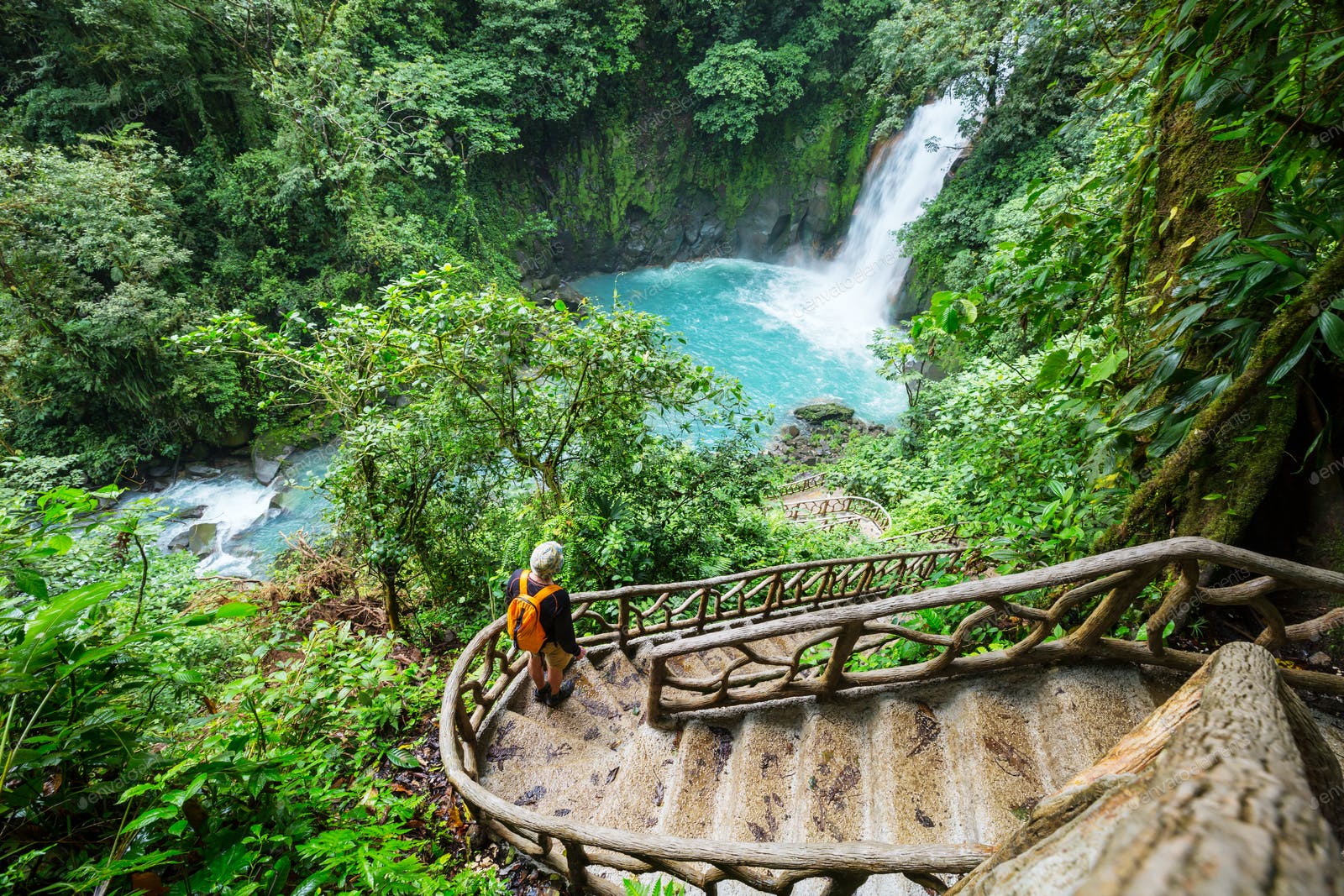
More than one million tourists visit Costa Rica each year. What draws a lot of people to the lightly advertised destination? Natural splendor and diversity are the answers. Costa Rica covers only 0.03% of the top of planet but it has about 6% of the world's biodiversity.
Visitors encounter seas, beaches, rivers, waterfalls, mountains, and an abundance of nature. Twelve major life zones provide habitat for over 10,000 kinds of flowering plants, 850 bird species, 3,000 butterfly species, and 209 species of mammals. Volcanoes, rainforests, cloud forests, lowland jungles, the Pacific coastline, and tranquil Caribbean beaches stretch across seven provinces. Thirty percent of the land is protected by national and private reserves, which harbor more than five percent of the world's plant and animal species.
Costa Rica is Central America's jewel. It's an oasis of calm among its turbulent neighbors and an ecotourism heaven, rendering it among the finest places to experience the tropics with minimal impact.
Costa Rica boasts 20 national parks, 8 biological reserves, and a wealth of other protected areas to enchant those that marvel at the wonders of nature. It draws ecotourists from around the globe. Activities include horse-back riding, hiking mountainous paths in the cloud forests, guided bird-watching tours, volcanoes, scuba diving, snorkeling, sailing, canopy tours, golf and much more.
Ticos, as the folks of Costa Rica are known, are well-known for being hospitable, and are quite happy to surpass their reputation. They seem to be well aware that their country is really a special place, and they go out of their way to accommodate their visitors, explaining items that may seem foreign to a foreigner, and helping make their stay as enjoyable as you possibly can.
Northwest Costa Rica, the Guanacaste province is for the active soul, drawing visitors using its beaches, rivers, waterfalls and natural attractions. Forming the eastern border is really a group of volcanoes that form the Cordillera de Guanacaste and Cordillera de Tilar�n.
From the mountains flow various rivers that roll down and form an alluvial plain drained by the Rio Tempisque, which empties in to the Gulf de Nicoya. The name Guanacaste is derived from quahnacaztlan, a native word for the guanacaste tree, that is Costa Rica's national tree.
With a new airport at Liberia, tourism to Guanacaste has boomed.
Costa Rica is really a tropical country with two seasons - dry and wet. The Guanacaste Province is the driest region of the country with significantly less than 55 inches of rain in the coastal areas.
Costa Rica occupies a territory of around 20,000 square miles in the southern part of Central America, and includes several small islands mostly on the Pacific side. It is similar to the state of Florida with two long coastlines. The united states is only about 200 miles long and 70 miles wide at the narrowest part.
Costa Rica is often in comparison to Switzerland and Hawaii because of its mountains and forests. Unlike many regions of Mexico, Central and South America, Costa Rica remains beautiful year-round. That is partly since it borders the Pacific Ocean on the west, the Atlantic Ocean on the east, and has a string of towering volcanoes on the Central Plateau. Combine all this and you have a unique tropical paradise with 11 climatic zones.
The high season in Costa Rica , December through April, is the dry season. The green season, which lasts from May to November, usually sees sunny mornings, with rain showers in late afternoon and evening. Overall, the climate is tropical, having an average temperature of 72�F (22�C). It might be much hotter across the coastal areas of the united states, and far cooler in the mountains.
In the past, agricultural exports, like bananas and coffee, have already been the staple of the Costa Rican economy. However, tourism has always played an ever-increasing role, and now it has become the dominant economic force. Ecotourism travel may be the most preferred for expansion because it will provide a sustainable resource for tourism for generations of Costa Ricans to come. Costa Ricans love to show off their country, and sincerely welcome all travelers and vacationers.
San Jose, population over one million, may be the capital and cultural heart of Costa Rica. Other major cities (by population) are: Alajuela, Cartago, Heredia, Liberia, Lim�n and Puntarenas.
To enter the country you now will need to have a valid passport. Some countries now require your passport to be valid for at the very least 6 more months in order to leave your country ahead here. Check with you embassy or airline. Costa Rica is on Central Standard Time, six hours behind Greenwich Mean Time and one hour behind EST in the us. It does not currently use daylight saving time.
No shots are needed. The water in the major cities of Costa Rica is safe & most hotels and restaurants offer purified tap water. You might prefer to drink water in bottles or seltzer to be certain. Costa Rica has excellent, low-cost health care and well-qualified practitioners. Many AMERICANS come to Costa Rica for plastic surgery or dental work.
Costa Rica is really a safe destination for 99% of its tourists, but it certainly is smart to exercise caution whenever one travels. In general, the country includes a low crime rate. Typically, crimes are simple thievery - non-violent crimes of opportunity, so just exercise caution, as anywhere in the world.
Costa Rica includes a reputation as one of the most stable and prosperous Latin American countries.
Costa Rica has something for everyone! Whatever your interests; eco-tourism trips bird watching, adventure tours, fishing, diving, rafting, canopy tours, golf, all inclusive hotels, vacation homes or just relaxing on an unspoiled tropical beach, you will discover all of that and much more in this tropical and secure paradise.
